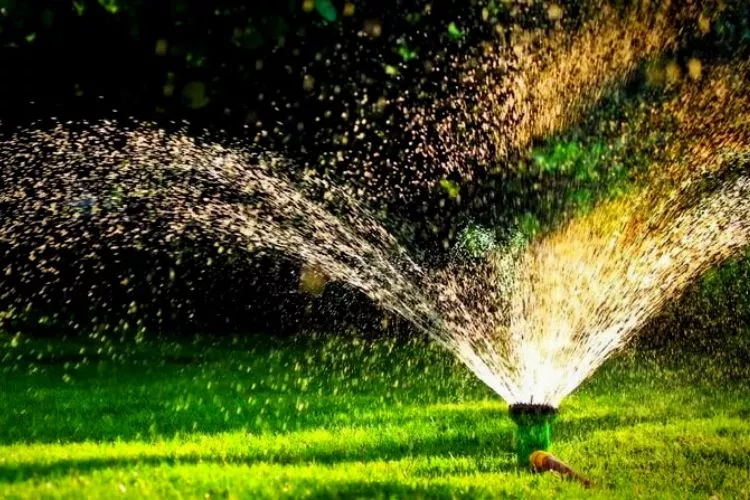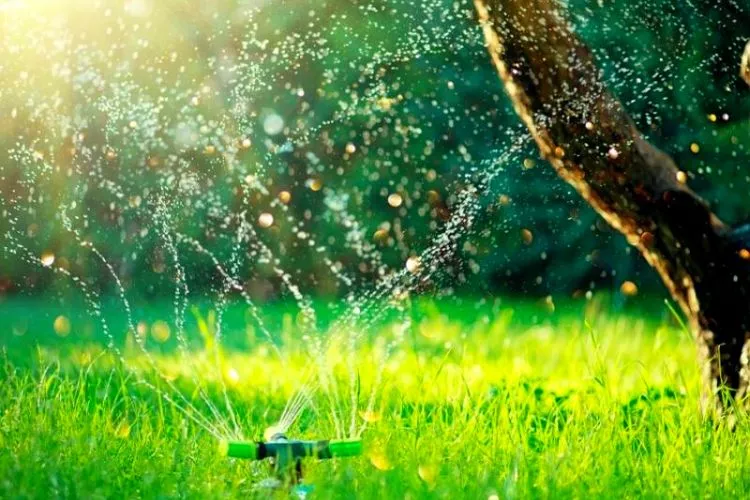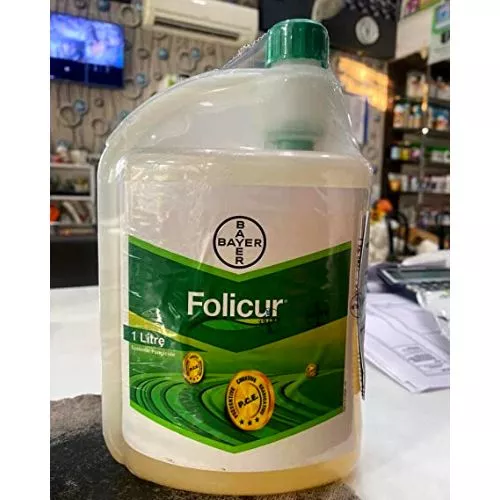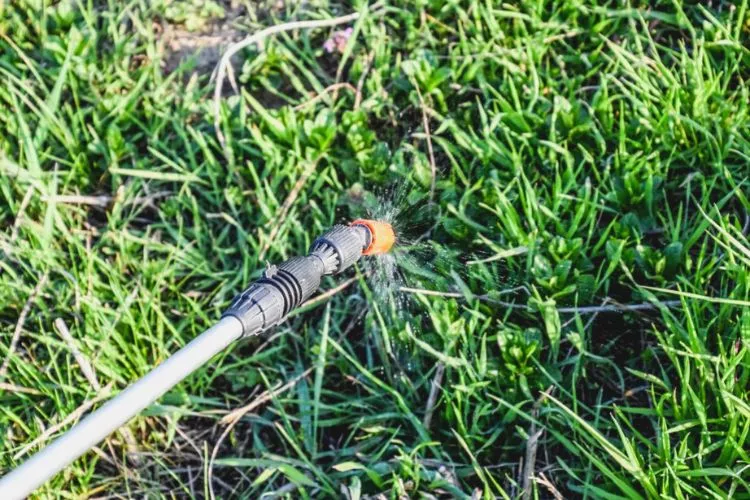Treating fungus and protecting your lawn from fungus is very challenging. And after applying fungicide, the most common question that comes to mind is should you water the lawn after applying fungicide or not. Answering this quarry is complex; you need to consider many things. But, yes, you can water the lawn after using fungicide, if it is systemic fungicide.
This topic will be discussed here, and it will help in treating fungicides in the lawn and watering them.

Should You Water the lawn after applying fungicide? The Actual Answer:
You can immediately water the grass after applying the fungicide for systemic fungicide. Water helps this type of fungicide to reach the roots of the grass and work effectively. This type of fungicide’s efficiency doesn’t get affected by water.
If you use contact fungicide, you should not apply water for at least 24 hours after application. Otherwise, the protective layer will be washed with water, which will not effectively treat the fungus. To treat rotten roots, you need to apply systemic fungicide with little water.
However, you must strictly follow the instructions mentioned on the packaging of the fungicide to get the expected results because different fungicides react differently with water. Many factors can affect the fungicide’s efficiency.
Why to apply fungicide to your lawn?
Fungicides are usually applied to lawns to prevent and control fungal diseases. Fungal diseases can cause discoloration, wilting, and death of grass and other plants. Applying a fungicide can help to protect your lawn from these diseases and keep it looking healthy and green.
What is the best time to apply fungicide?
The best time to apply fungicide is when the disease is first noticed or when conditions are favorable for disease development. Fungal infection is expected when the weather is warm and humid and the plants are actively growing.

You need to know all the possible signs of fungal infection and take immediate action to prevent it from spreading. Some most common identities of fungal infections are yellowish, brownish, or white patches growing on grass blades; there is discoloration or roughness; grass with darker, slimmer patches; irregular spots on the stems and edges of different colors, etc.
It is also essential to identify if it is a bacterial infection or a fungal infection. So it is good to consult an expert if you find any sign of infection.
Type of fungicide you’re using
There are mainly two types of fungicides: contact fungicides and systemic fungicides.
1. Contact fungicide
This type of fungicide creates a protective covering over the grass leaves. This protective layer saves the grass or plant from any fungal infections. This type of fungicide is only effective for short periods. You need to apply it multiple times in a month.
When using this type of fungicide, you should not apply water immediately. It can wash off the protective layer. Usually, these fungicides are used to prevent rather than cure fungal infections.
2. Systemic Fungicide

The working principle of systemic fungicides is different from contact fungicides. It works internally. When the grass absorbs this fungicide, it gains the power to fight against most fungal infections.
These are effective for a long time. And it can cure fungal infections. As the roots of the grass absorb these fungicides, you need to apply water while applying these fungicides.
Do you water in granular fungicide?
To apply the granular fungicide, you first must water the grass and wet it. A wet atmosphere helps this type of fungicide to contact the grasses properly.
Should you water the lawn after applying Scotts fungicide?
If you have applied Scotts Disease Ex on your lawn, you should not use water for at least two days because water can wash away the chemicals. This fungicide starts its work 20 to 24 hours after its application and remains effective for almost one month.

With the proper application process, you can use this fungicide in both a protective and curative manner. This fungicide is effective against red thread, Pythium, brown patch, yellow patch, stripe rust, Typhula & Southern Blight, Powdery Mildew, Necrotic Ring Spot, and other most common lawn diseases.
How long does fungicide need to be on before rain?
The effect of rain on fungicide varies with the rain’s intensity and the type of the fungicide. If you have applied contact fungicide on your lawn and it has started raining within 45 to 60 minutes, then the effectiveness of the fungicide becomes almost zero. And if the rain comes after one day of application, its efficacy is severely damaged.

The systemic fungicides can tolerate light rain and even helps the fungicides to penetrate the soil systematically. But if the rain comes after 24 hours, that will be more effective.
Heavy rains are also very harmful to these fungicides. If the chemicals get washed away before absorption, their effectiveness becomes zero again. If you suspect any rainfall within 24 hours, it is good to apply fungicides more than usual.
What happens if it rains after fungicide?
Fungicides are only effective on the surface of the plant or grass. If rain has washed away the applied fungicide, you need to reapply it to keep your place free from fungal infections. But if you have used systemic fungicide and the rain comes after 24 hours of application, you don’t need to worry too much.
Can fungicide be applied to a wet lawn?
For systemic fungicides, a wet lawn is good; even sometimes, it helps the plants to absorb this fungicide easily. So you can apply this type of fungicide to a wet lawn. But for contact fungicides, you must keep the place completely dry for at least 48 hours.
Do Fungicide Treatments Fail if you water your lawn after applying fungicide?
If you use any contact fungicides and apply water immediately, then there will be no improvement. Its efficiency will become zero. But for systemic fungicide, you can use water after applying the fungicide.
You May Also Find Useful: Why Is My Grass Turning White
Conclusion:
The fungus can easily ruin the beauty of your lawn. So, whenever you find any distortion on the grass, immediately concern an expert. The effect of water on fungicides varies with different conditions. So, you need to follow the manufacturer’s instructions properly and strictly. But before that, you need to be sure that your lawn is affected by fungus, not by any bacteria or virus.
